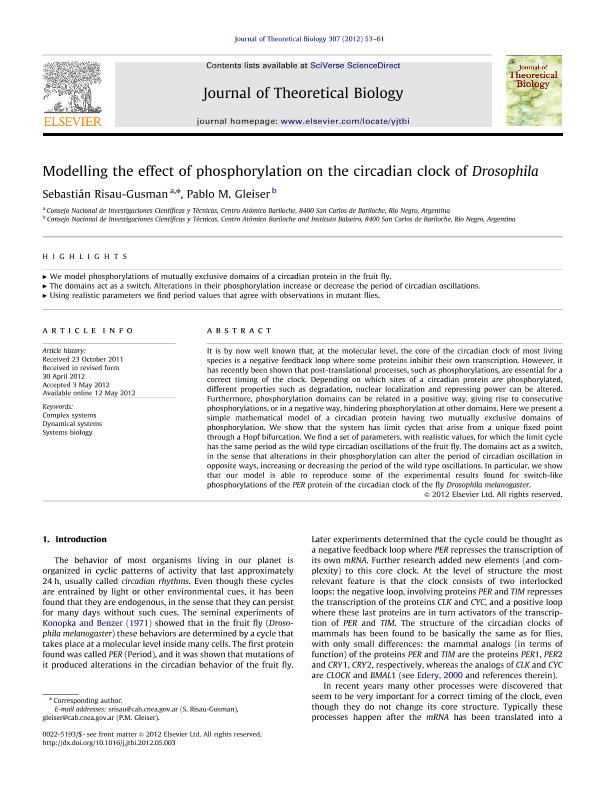Artículo
Modelling the effect of phosphorylation on the circadian clock of Drosophila
Fecha de publicación:
05/2012
Editorial:
Academic Press Ltd - Elsevier Science Ltd
Revista:
Journal of Theoretical Biology
ISSN:
0022-5193
Idioma:
Inglés
Tipo de recurso:
Artículo publicado
Clasificación temática:
Resumen
It is by now well known that, at the molecular level, the core of the circadian clock of most living species is a negative feedback loop where some proteins inhibit their own transcription. However, it has recently been shown that post-translational processes, such as phosphorylations, are essential for a correct timing of the clock. Depending on which sites of a circadian protein are phosphorylated, different properties such as degradation, nuclear localization and repressing power can be altered. Furthermore, phosphorylation domains can be related in a positive way, giving rise to consecutive phosphorylations, or in a negative way, hindering phosphorylation at other domains. Here we present a simple mathematical model of a circadian protein having two mutually exclusive domains of phosphorylation. We show that the system has limit cycles that arise from a unique fixed point through a Hopf bifurcation. We find a set of parameters, with realistic values, for which the limit cycle has the same period as the wild type circadian oscillations of the fruit fly. The domains act as a switch, in the sense that alterations in their phosphorylation can alter the period of circadian oscillation in opposite ways, increasing or decreasing the period of the wild type oscillations. In particular, we show that our model is able to reproduce some of the experimental results found for switch-like phosphorylations of the . PER protein of the circadian clock of the fly .
Palabras clave:
COMPLEX SYSTEMS
,
DYNAMICAL SYSTEMS
,
SYSTEMS BIOLOGY
Archivos asociados
Licencia
Identificadores
Colecciones
Articulos(CCT - PATAGONIA NORTE)
Articulos de CTRO.CIENTIFICO TECNOL.CONICET - PATAGONIA NORTE
Articulos de CTRO.CIENTIFICO TECNOL.CONICET - PATAGONIA NORTE
Citación
Risau Gusman, Sebastian Luis; Gleiser, Pablo Martin; Modelling the effect of phosphorylation on the circadian clock of Drosophila; Academic Press Ltd - Elsevier Science Ltd; Journal of Theoretical Biology; 307; 5-2012; 53-61
Compartir
Altmétricas




